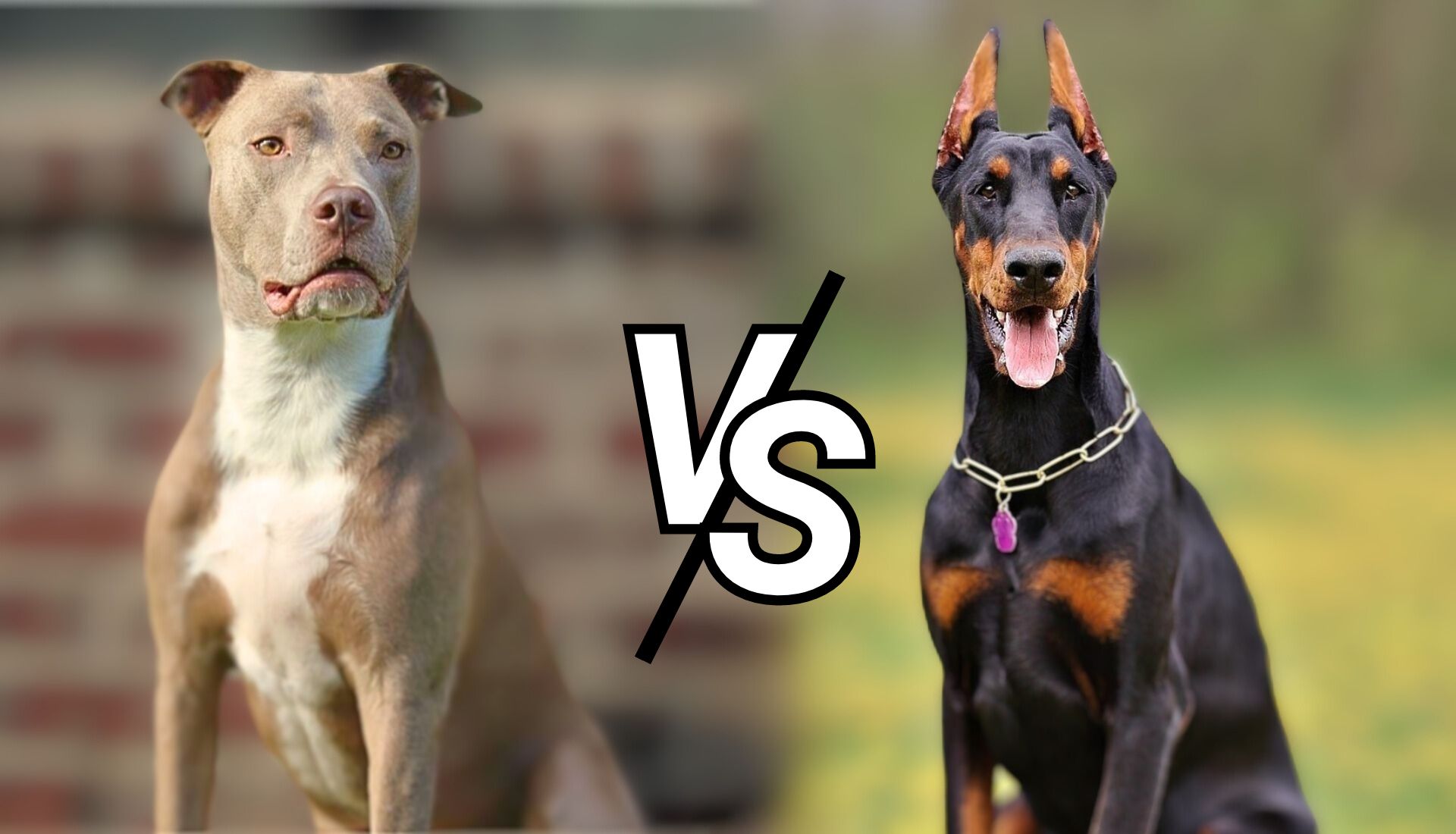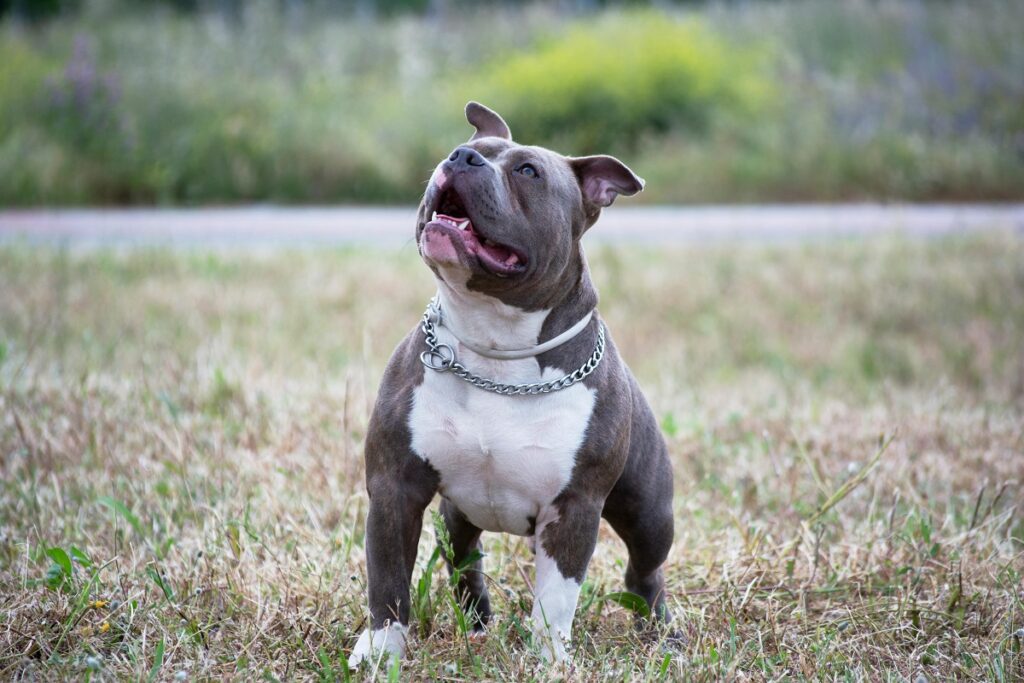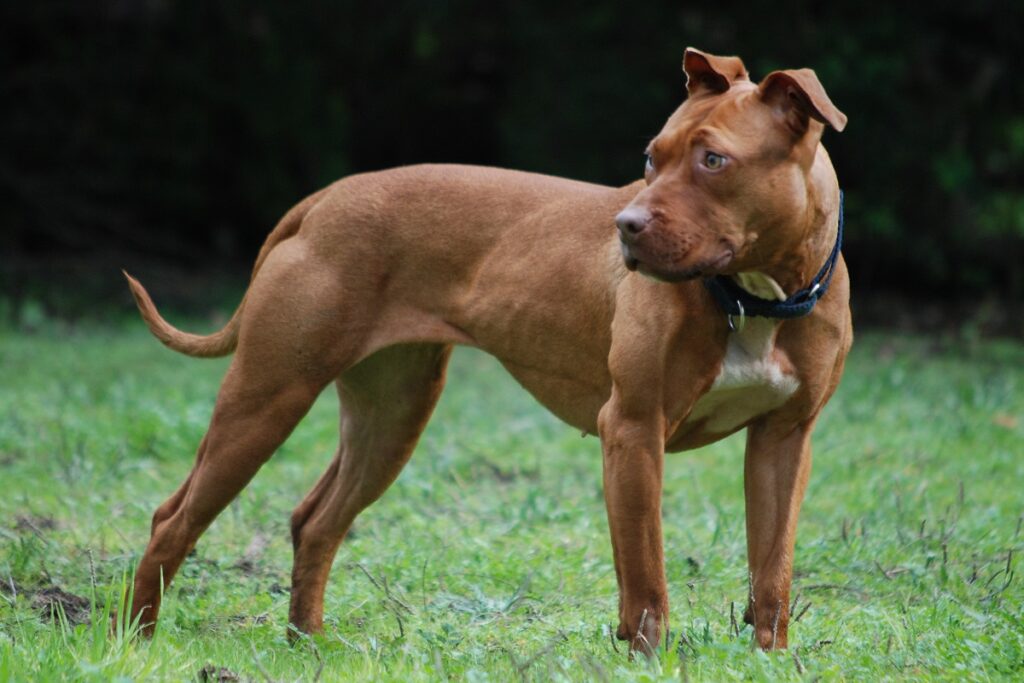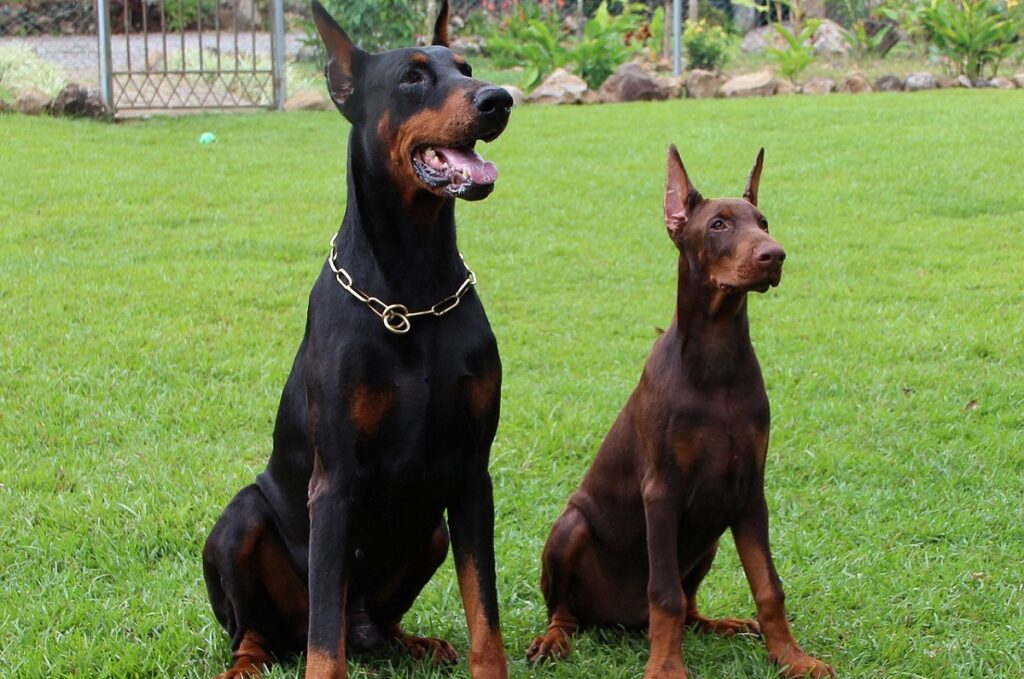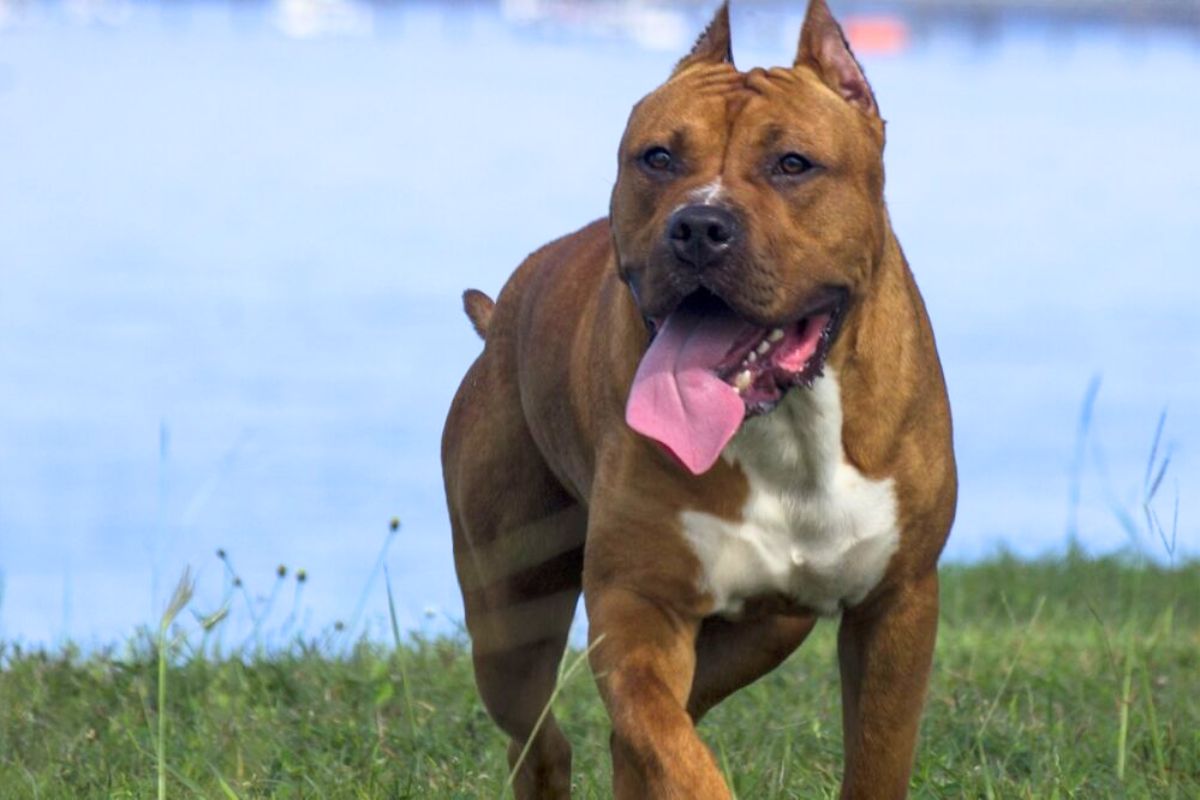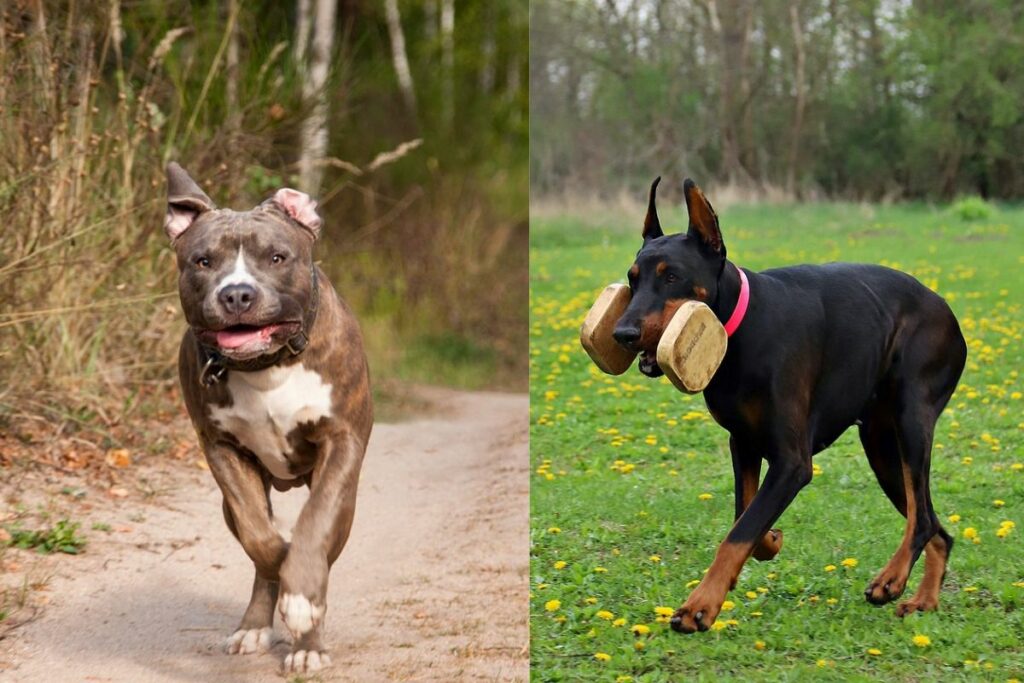Choosing between a Doberman and a Pitbull requires careful consideration, as both breeds possess distinct traits and temperaments. This comparison delves into the key differences between these powerful dogs, examining their origins, protective instincts, exercise needs, and trainability. Ultimately, the “better” breed depends entirely on your lifestyle, experience, and commitment to responsible ownership. Whether you’re seeking a loyal guardian or an energetic companion, understanding the nuances of each breed is crucial to making an informed and fulfilling decision.
Dobermans and Pitbulls often get a bad rap, but they’re actually smart and loving dogs. Despite their tough past as guard dogs, they’re not naturally aggressive. They just need the right care to be great pets.
The main differences are how they look and their size – Dobermans are bigger, and they’re usually not as quick to warm up to strangers as the super friendly American Pit bull Terrier. Knowing these details can help you pick the right dog for your life, especially since both breeds are often unfairly judged.
Don’t worry! We’ll show you the differences between Dobermans and Pit bulls to help you find your perfect furry friend.
Doberman vs Pitbull
Doberman vs. Pitbull: History
Both the Doberman Pinscher and Pit bull dogs get a bad name for being tough, but they’re actually from different places and have interesting histories.
Doberman Pinschers came from Germany in the 1800s. They are known for being great protectors and are loved by police and the military. They’ve been in the US since 1921 and are pretty popular pets.
Pit bulls have a past that goes back to the 1700s in the UK, starting from Old English Bulldogs. They were once used in rough sports but have also been amazing family pets and brave in wars. Even though the AKC doesn’t officially recognize them, they’re still awesome dogs.
Doberman vs. Pitbull: Size
Dobermans and Pitbulls look really different from each other. Dobermans are usually bigger, growing up to 28 inches tall and weighing between 60 to 100 pounds. They have a sleek body and long legs, giving them a unique look.
Pit bulls, meanwhile, are shorter and bulkier. They have strong muscles, with males standing between 17 to 21 inches tall and weighing from 29 to 70 pounds.
Even though Dobermans are generally bigger, both breeds look athletic and well-balanced, and it’s rare to see either breed looking overweight.
Doberman vs. Pitbull: Coat Type and Color
Both have glossy coats, but the Doberman’s coat is a bit longer than the Pitbull’s. Dobermans usually have a black and rust color with specific markings, while Pit bulls can be almost any color, though red and blue are quite common.
Pit bulls can’t be merle, and white Dobermans are actually not a breed standard but result from albinism or leucism. So, if you come across a merle Pitbull or a white Doberman, know that these colors aren’t typical for the breeds and it’s best to steer clear.
Doberman vs. Pitbull: Personality
Dobermans are loving, full of energy, and have a strong protective streak, making them great watchdogs. They enjoy playing and hanging out with people. Thanks to their desire to please, training them is usually straightforward. They’re known for being loyal, brave, and affectionate.
The tricky part about Dobermans is they might not get along with other male dogs and can get bored quickly, leading to potential mischief. The Doberman, despite his watchdog past, is sensitive and craves attention. Leaving him alone for too long can lead to separation anxiety and unwanted behaviors.
Pit bulls are also super loving, faithful, and smart. They’re big on cuddles and will protect their family if needed, but they’re not the best at being guard dogs because they’re pretty friendly with everyone. They’re more about chilling at home than running around all day. You could describe pit bulls as intelligent, confident, and dedicated.
The challenges with pit bulls include their stubbornness, which can make training a bit tough. They’re not great with other dogs and prefer a stable environment. While they do well with kids, they’re not as playful or patient with little ones as some other dog breeds might be.
Doberman vs. Pitbull: Socialization
Dobermans, known for their energy and sociability, thrive on ample exercise and play. Early socialization with well-mannered people and dogs is crucial for them to distinguish friends from threats.
Contrary to common misconceptions, Pit bulls are exceptionally sociable with humans, eagerly interacting with anyone they meet. However, they’re not as comfortable around other dogs. They require early training and socialization to flourish as a calm dog breed.
Doberman vs. Pitbull: Health Concerns and Care
As they age, both these healthy breeds can face specific health concerns. Dobermans may encounter thyroid disease, heart conditions, hip dysplasia, Von Willebrand disease, and clotting disorder. On the other hand, Pitbulls are prone to hip and elbow dysplasia, thyroid problems, and degenerative myelopathy, a spinal cord ailment.
In terms of diet, these two breeds benefit from high-quality, protein-rich, grain-free kibble. A Doberman typically requires around four cups of kibble daily, while a Pitbull generally needs about two and a half cups.
Both breeds have short, fine coats and are low shedders, requiring minimal grooming. Brushing once or twice weekly, along with nail trimming, ear cleaning, and daily teeth brushing, helps maintain their overall well-being.
Doberman vs. Pitbull: Life Span
When choosing between a Doberman Pinscher and a Pit Bull, it’s important to consider their average lifespans. Dobermans typically live 10-12 years, while Pit Bulls can live 12-16 years. This difference in longevity may influence the duration of companionship you’ll have with your pet.
To ensure your Doberman or Pit Bull lives a long, healthy life, start with proper care and attention from an early age. By providing them with the necessary love and care, you can maximize their lifespan and enjoy many cherished years together.
Doberman vs. Pitbull: Exercise Needs and Trainability
Both Dobermans and Pit Bulls are highly intelligent and trainable breeds, often utilized in police and military roles due to their exceptional capabilities. Early training and socialization are crucial for both, given their size and strength.
For effective training, consistency and positive reinforcement are key for both breeds. Keep their minds engaged with challenging tasks and introduce fun tricks to keep them stimulated.
Neither dog breed is suited for a sedentary lifestyle; both require ample physical activity. Plan for at least an hour of exercise daily, including activities like jogging, hiking, or playtime in the backyard to prevent destructive behavior caused by pent-up energy.
Conclusion
Both the Doberman and the American Pitbull Terrier are active dogs that have been unfortunately misunderstood due to breed-specific legislation and negative stereotypes. While the Doberman is known for its sensitivity and need for attention, the Pitbull, often labeled incorrectly as aggressive, can thrive with proper training and socialization.
Whether considering a Doberman puppy or an American Pitbull Terrier, both these misunderstood breeds have the potential to be loving, loyal companions, provided they receive the care, training, and understanding they deserve.
Ultimately, the “better” breed between a Doberman and a Pitbull depends entirely on the individual owner and their lifestyle. Dobermans thrive with experienced owners committed to consistent training and socialization, offering an elegant and athletic companion. Pitbulls, while also needing dedicated training, are often more adaptable to different living situations and can be incredibly affectionate, but require an owner prepared to combat breed stigma. Neither breed is inherently “better,” but careful consideration of temperament, energy levels, and breed-specific needs is crucial for a harmonious and fulfilling relationship. Researching responsible breeders and meeting individual dogs is vital for making the right choice.

